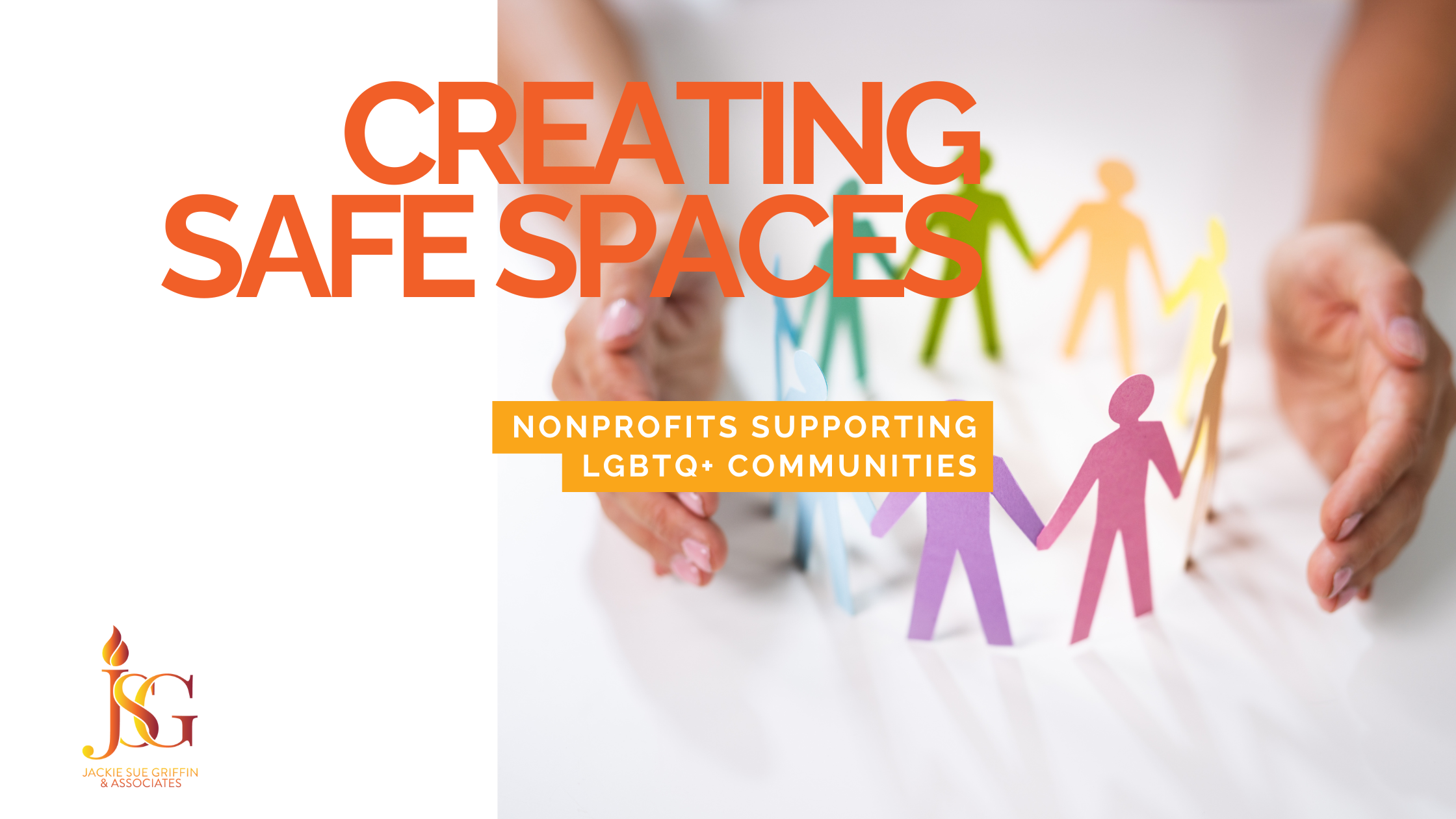
02 Jun Creating Safe Spaces: Nonprofits Supporting LGBTQ+ Communities
We’re living in a time when everyone’s talking about equity and inclusion. And that’s good! But the real magic happens when nonprofits move beyond the talking and start creating spaces where LGBTQ+ individuals don’t just feel tolerated but instead, feel genuinely valued.
So what does that actually look like in practice? And how do we get from good intentions to real, lasting change?
It’s More Than Policy
Many organizations proudly point to non-discrimination clauses. While those steps matter, safe spaces require more than public gestures. They’re built through everyday practices, subtle signals, and a culture that consistently affirms identity.
True safety isn’t just the absence of harm, t’s the presence of affirmation. It’s the difference between someone walking in hoping they’ll be accepted and walking in knowing they already are.
This shows up in small but powerful ways. Are staff using inclusive language at the front desk? Do forms allow space for people to share their gender and pronouns in their own words? Does your leadership team reflect the diversity of the LGBTQ+ community you serve?
When these pieces align, people can feel it. There’s a sense of authenticity that no policy alone can create.
Representation That Resonates
Representation matters, especially for LGBTQ+ individuals whose identities often intersect with other marginalized experiences. When people see themselves reflected in leadership, programming, and storytelling, it signals that their voices aren’t just included—they’re shaping the direction of the work.
This doesn’t mean hiring one person and calling it done. It means creating space where LGBTQ+ perspectives are heard, respected, and built into the structure of decision-making. It means engaging community members directly, listening with humility, and being willing to adapt when feedback reveals blind spots.
The result? Programs that are more responsive, more inclusive, and more trusted by the communities they aim to serve.
Understanding Intersections
No two LGBTQ+ experiences are the same. Each person brings intersecting identities—race, gender, socioeconomic background, disability, immigration status—that affect how they move through the world.
Supporting someone navigating housing instability as a Black trans woman requires a different approach than helping a white gay man facing workplace discrimination. Both deserve care, but their needs are not identical.
That’s why inclusive work demands nuance. It asks us to go deeper, avoid blanket assumptions, and make room for complexity. And when we do, we uncover opportunities to serve people more fully and with greater impact.
Building Culture From Within
Before safe spaces can exist externally, they have to be rooted internally. It’s not enough to offer inclusive services if staff don’t feel confident modeling those values day to day.
This means creating a workplace where asking for pronouns is normal, where team members feel empowered to address exclusionary behavior, and where learning and growth are embraced without shame.
When inclusive practices become second nature behind the scenes, they naturally flow into the way programs are delivered. And that kind of cultural shift is powerful—it builds trust, strengthens teams, and elevates service quality.
Commitment Beyond Pride Month
Supporting LGBTQ+ communities should never be reduced to a campaign or a checkbox on a grant report. It should be integrated into the way your organization operates year-round.
That commitment can show up in how you hire and promote staff, the professional development you prioritize, the partners you choose, and the values you center in strategic planning. It also shows in how you handle mistakes—with accountability, transparency, and a willingness to do better.
At their best, nonprofits can be places of genuine belonging and healing. Creating safe, affirming environments for LGBTQ+ people isn’t just good for them—it strengthens the entire organization and expands its ability to serve with compassion and integrity.
The path forward is clear. The question is: are we willing to take it?
This goes beyond the typical DEI training. It’s important to create a culture where staff members naturally use inclusive language, where asking for pronouns becomes second nature, where team members feel comfortable and empowered to speak up when something isn’t right.
Make your organization one where people feel safe to make mistakes, learn from them, and do better next time. That kind of authentic growth is contagious, and it absolutely translates to how clients and community members experience your services.
Making This a Long-Term Commitment
Here’s our challenge for nonprofit leaders reading this: supporting LGBTQ+ communities shouldn’t be a June initiative or a grant requirement to check off. It needs to be woven into the fabric of how you operate year-round.
This shows up in your hiring practices, your staff development, your funding priorities, and whose voices you center in strategic planning. It shows up in how you respond when things go wrong (because they will), and how you demonstrate accountability to the communities you serve.
Nonprofits have an incredible opportunity to be places of genuine healing and belonging. And that’s not just good for LGBTQ+ communities – it makes our entire sector stronger and more effective. The real question is whether we’re ready to do the work it takes to get there.

No Comments